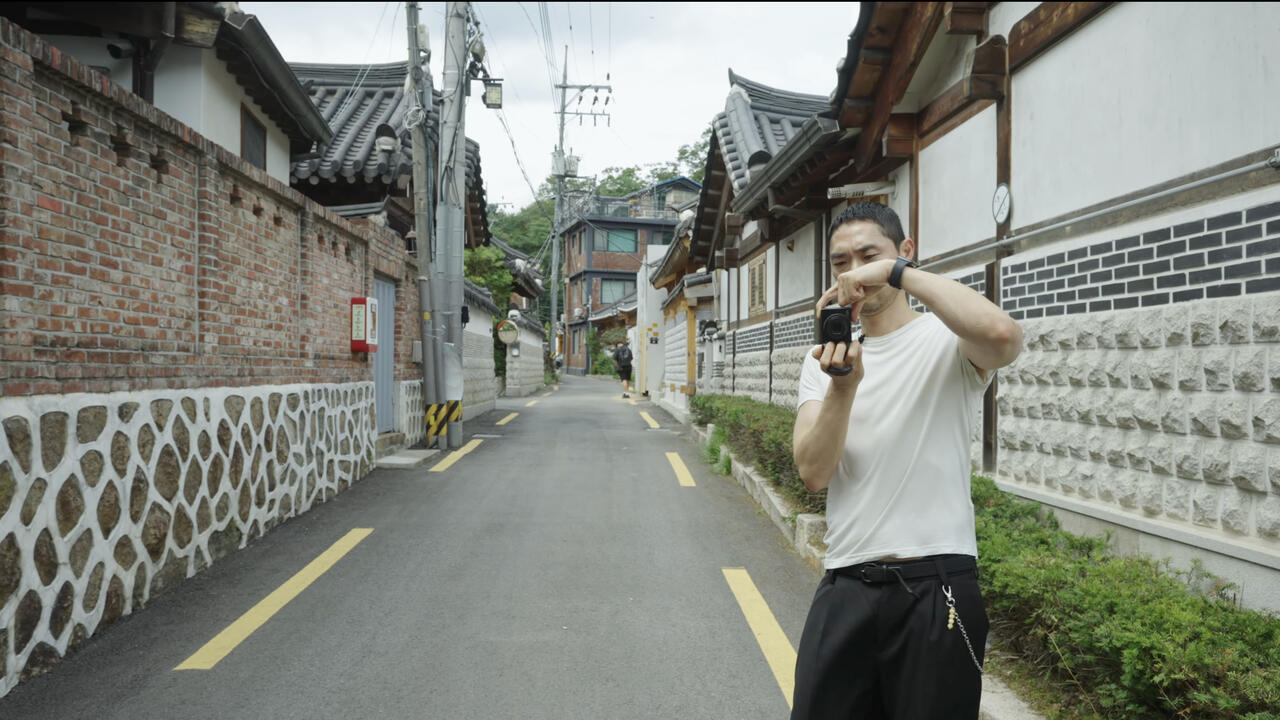Steve Claydon
Steven Claydon’s posters, paintings and sculptures in ‘Fear of a Planet’ were installed in a semi-darkened space, creating the impression that they might be precious relics of an unknown civilization. A single video piece, titled From Earth (2005), inhabited a parallel conceptual space as a fantastical documentary about the world’s demise. Bound together by a loosely spun sci-fi narrative, the impression of an aura surrounding these objects was productively displaced from the tricky arena of theoretical debate to be made permissible by fiction.
The works contained a number of clues derived from culture as we know it: glimpses of symbols, images and text from familiar sources, including the Vodaphone logo in various mutations. Such borrowings invited the collision of art, fetish and commodity in single objects. But unlike, say, Jake and Dinos Chapman’s ‘Chapman Family Collection’ (2002) of pseudo-African sculptures bearing the McDonald's logo or Brian Jungen’s transformation of Nike trainers into ceremonial masks, Claydon’s work does not make reference to specific ethnographic artefacts. Pieces such as Benign Tumour (Doonesbury Head) (2005) – a continuous wood-turned rendition of the cartoon character’s silhouette – draw power from their resistance to any easy separation between the contemporary referent, its historical source (Renato Bertelli’s Head of Mussolini, 1933) and its transformation by the artist. Here the profile becomes a perpetually spinning shape which eludes being read as a face; in Pound (Bat) (2005) the curved Vodaphone logo convincingly doubles as the glinting single eye of a bat.
A problem with the overcrowded installation, though, was that explicit ideas of magic and ritual were made too literal in certain pieces, distracting the viewer from the subtle metamorphoses at stake in other works. Mutt & Jeff (The Great Dictators) (2004–5), comprising two bulbous and ancient-looking heads adorned with crystalline growths and rabbit tails, was evidence of this difficulty, as were the not quite hidden bottles of ‘Black Cat Bone’ floor wash for ‘good luck’ and ‘Powerful Indian House Blessing’ to ‘keep away enemies’. These short cuts to ideas of occult and superstition – fashionable themes in much current practice – distracted from the exquisite charge of other pieces that manipulated found material to truly transformative effect. Negative, (2004–5), a poster featuring images of butterflies pierced here and there with gold ear studs, reinvents found images associated with the early 20th-century cult of common craft, the Kindred of the Kibo Kift, as contemporary equivalents to a Victorian insect specimen collection: trapped, immobile and fragile evidence of exotic exploration. The film, which stitches together skilfully mined sequences from David Attenborough’s Life on Earth TV series of nature documentaries, describes fantastical inhabitants of an apparently unfamiliar universe in jewelled detail: ‘antlers tipped with blue, organ pipes blood red, mysterious turquoise shapes […] phosphorescent purple eyes.’ These mental images are set against a backdrop of ‘stagnant waters’, an atmosphere of ‘rotten eggs’ and a process of decay. As the film ends, the voice-over laments that ‘no speck of green relieves the desolation of the empty planes. This is the debris.’
Benjamin Buchloh used the metaphor of the ‘cargo cult’ – hybrid religious practices which grew amongst native islanders of New Guinea after World War Two, involving a fetishisation of manufactured commodities brought in by aid workers – in relation to Thomas Hirschhorn’s shrines made from mass-produced goods and packing materials. Buchloh argues that Hirschhorn has turned the concept back on itself by making visible contemporary sculpture’s status in an ‘abandoned zone’ between the increasingly expendable commodity and ‘art’. In a piece written for the website showstudio.com, Hotel co-director Christabel Stewart cites the same notion in relation to an earlier piece of Claydon’s work – a sculptural rendition of a red question mark, Untitled (2004) – likening its presence the way in which ‘objects such as carefully carved headphones were made out of wood in the false perception that these objects would spiritually solicit new goods.’ The idea of the cargo cult was partly about a misinterpretation of unfamiliar cultural artefacts – utility mistaken for spirituality – but is also used to refer to the idea of setting too high a value on material possessions.
Claydon appears to be fascinated by the dual principles of this idiom, using a fictional narrative to create the possibility of objects that have significance in a community of shared meaning, and yet injecting the same objects with a critique of what that community – our late capitalist society – represents. Shrouded in half-light, the exhibition space appeared as a kind of dead zone where, having been consumed, cultural detritus lodges in and colonizes parts of the mind, aggressively inserting itself into hand-crafted art objects generated in the imagination. It seems that Claydon turns to the realm of science fiction not to point to a possible future Utopia but to open up a parallel universe which looks critically at the present, extrapolating principles of consumption and exchange to imagine how the sediments of our culture might otherwise be seen.

















